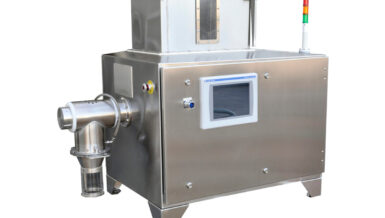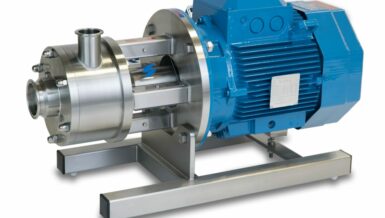- High-viscosity mixing: Lubricant grease products of all types share viscosities of as much as 1,500 cSt or higher. These high viscosities require mixing vessels and agitator drive units with sufficient power to mix these batch ingredients.
- High temperature processing: Lubricants used in equipment that runs at high speeds and generates high internal temperatures must be formulated and processed for high temperature operation.
- Consistent ingredient addition and blending: Specialty and high-performance lubricants often use costly ingredients and additives, or dry ingredients which may be difficult or dangerous to manually load into the open top of a tank or kettle. In their dry state, these ingredients may also be difficult to mix with liquid petroleum base ingredients, creating fisheyes or lumps of unmixed ingredients in the vesse
- Efficient de-aeration: When processing costlier high-performance lubricants, it is especially important to eliminate air bubble formation, which normally occurs during the mixing process. The presence of air bubbles affect how precisely these expensive products are dispensed into packaging shipped to the end user.
- Sanitary and safe operation: For manufacturers of food-grade lubricants, it is mission-critical to ensure their products are sanitary and free of contaminants. Other specialty or high-performance lubricant products — which may use hazardous ingredients or additives, or high temperatures, in their processing — must give extra consideration to protecting operator safety.
Processing Vessel Requirements for Optimal Production
To meet the processing challenges of their specific products, food-grade, specialty and high-performance lubricant manufacturers may be wise to emphasize certain characteristics in their vessel and mixing equipment:
- Robust design and construction to efficiently mix and blend high- viscosity products: Mixing high-viscosity greases requires drive-units robust enough to continuosly move thick, heavy batch ingredients. To provide long-term service with low ownership costs, all components of the drive system — gearbox, driveshaft, bearings, agitator assembly and other moving parts — must be ruggedly designed and precisely fabricated to withstand the stress of constant operation.
- Vacuum operation for trouble-free ingredient addition and thorough de-aeration: Adding vacuum pressure operation and a secondary valve to the processing vessel enables dry powder ingredients to be consistently dispersed directly into the liquid batch, without the risk of fisheyes or lumps of unmixed material collecting on the sides of the vessel.
- Special vessel and jacket design for high temperature operation: Lubricants often require processing at temperatures beyond that of the 350-degree limit for steam heating in conventional processing vessels. Vessels engineered to circulate special heat transfer fluids in the vessel jacket can boost processing temperatures close to 500 degrees. Be aware that the higher heat operation requires a jacket design that is both highly efficient, to consistently transfer heat energy to the vessel sidewalls, and robust enough to withstand continuous long-term operation at these higher temperatures.
- Vessel and mixer design to maximize product yield: When costly ingredients are used in high-performance or specialty lubricant products, the vessel and its agitator must be designed to efficiently clear the product from the vessel sidewalls and discharge it from the vessel. Less efficient designs will leave excess batch material at the bottom of the vessel, which is either wasted, or must be manually cleared or recovered at extra cost.
- Sanitary design for food-grade lubricant production: Vessels designed to manufacture food-grade lubricants must be fabricated in stainless steel for sanitary, contaminant-free operation, and designed for fast, efficient cleanability to minimize contamination risk.
Manufacturers of specialty lubricants who deploy processing vessels that address their unique mixing, temperature and safety issues will be strongly positioned for operational success.































